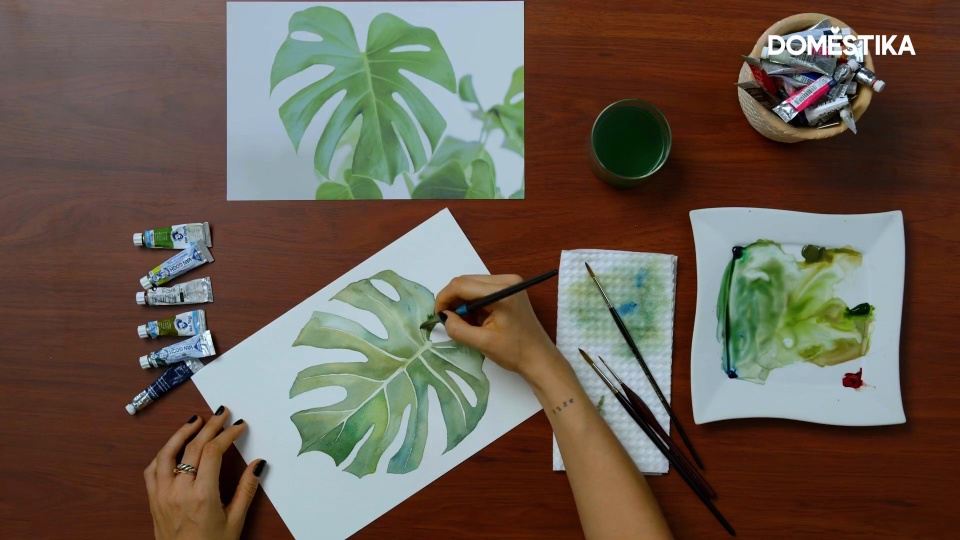Watercolor Tutorial: Paint a Leaf, Step-by-Step
Learn how to draw a Swiss Cheese Plant leaf from scratch with Luli Reis
Creating a botanical watercolor is a delicate process of observation that allows you to recreate the colors, shadows, textures and effects you only find looking at natural splendor and beauty. Which is why it’s important to have the leaf, flower or plant (or very high resolution images) at hand to work from.
In this tutorial, artist, illustrator, designer and botanical watercolor expert Luli Reis (@lulireis), teaches you the basic steps to create a botanical watercolor of a Swiss Cheese Plant from scratch.
Don’t miss it:
You will need the following materials for this tutorial: watercolor paper and paints, paintbrushes, a mixing palette, kitchen roll and water.
1. Wet the center of the leaf
Start painting from the center of the leaf, dip your brush in the water and moisten only the central areas. Don’t try and stay within the line, you can wait for that area to dry out before starting to shade the other sections of the leaf. Start with more watery paint to achieve a light green shade.

2. Use a darker shade to create depth
Use less watery paint in the sections where you want to create darker shades. You can also mix your greens to achieve a more natural effect. Then wait for your paint to dry.

3. Go over the second layer using darker shades
Once the first layer is dry, start creating a second layer by reinforcing the regions that need darker tones. This will give your leaf greater depth and more shadow.
Simply use a clean brush soaked in clean water to soften the color in a particular area. Gently brush the desired area and your color will be softer or lighter, creating a little degradé. Wait for the paint to dry again after your second layer, before starting on the details.

4. Use a 0 brush to create details
Use a 0 brush and a very dark shade to create details that help the leaf jump off the paper and achieve a 3D effect. You can also use the same brush to lighten a few areas to highlight the details. This will help give your illustration more depth.

Like this tutorial? Luli Reis will teach you how to create a botanical illustration using shapes, colors and textures in her online course: Botanical Watercolor: Illustrate the Anatomy of Flowers.
English version by @studiogaunt








0 comments